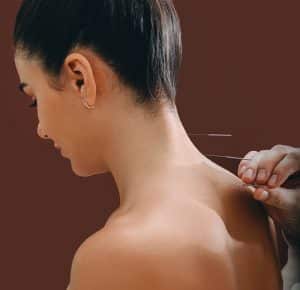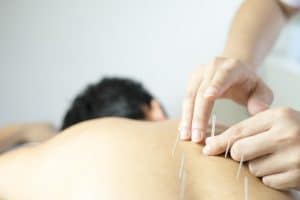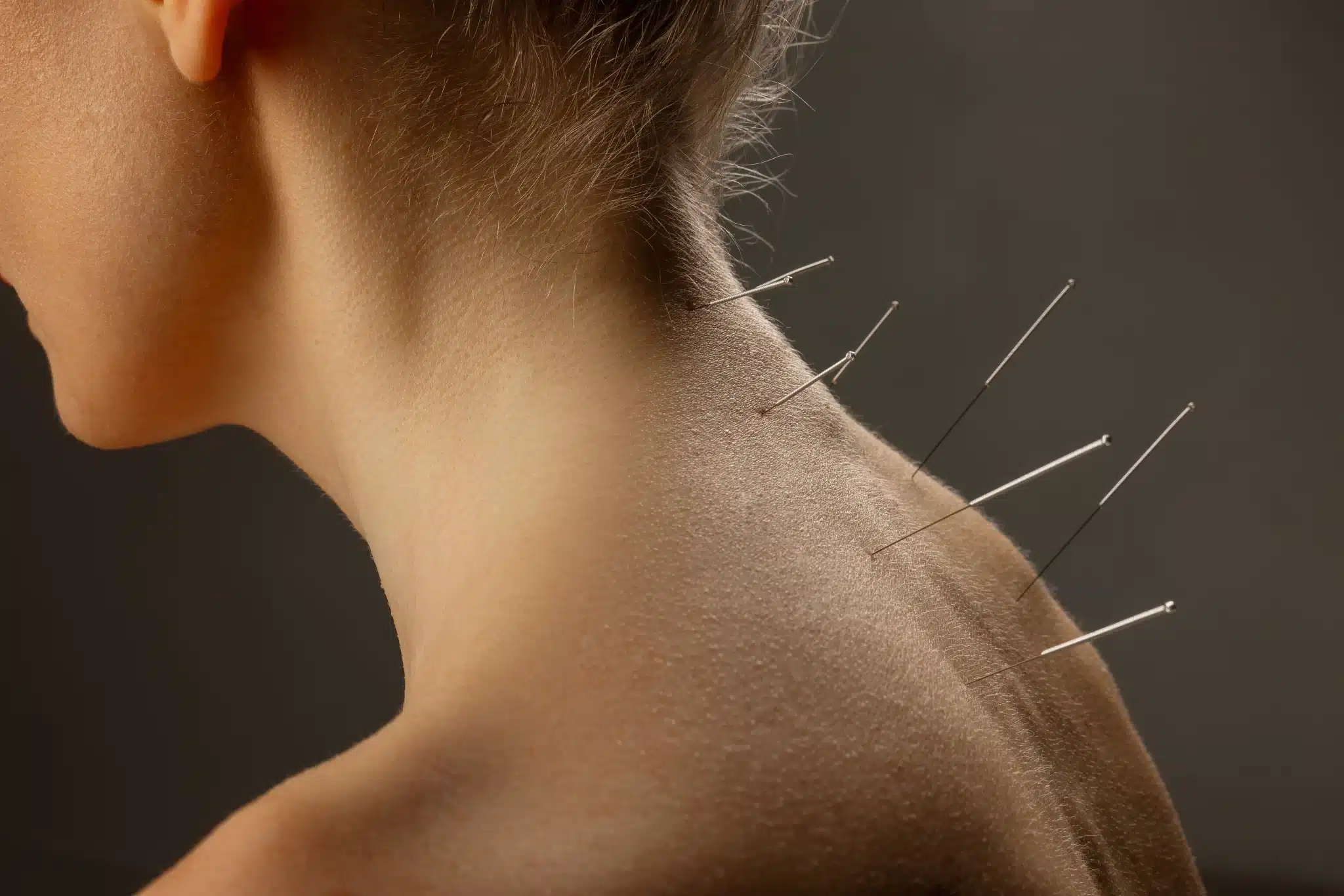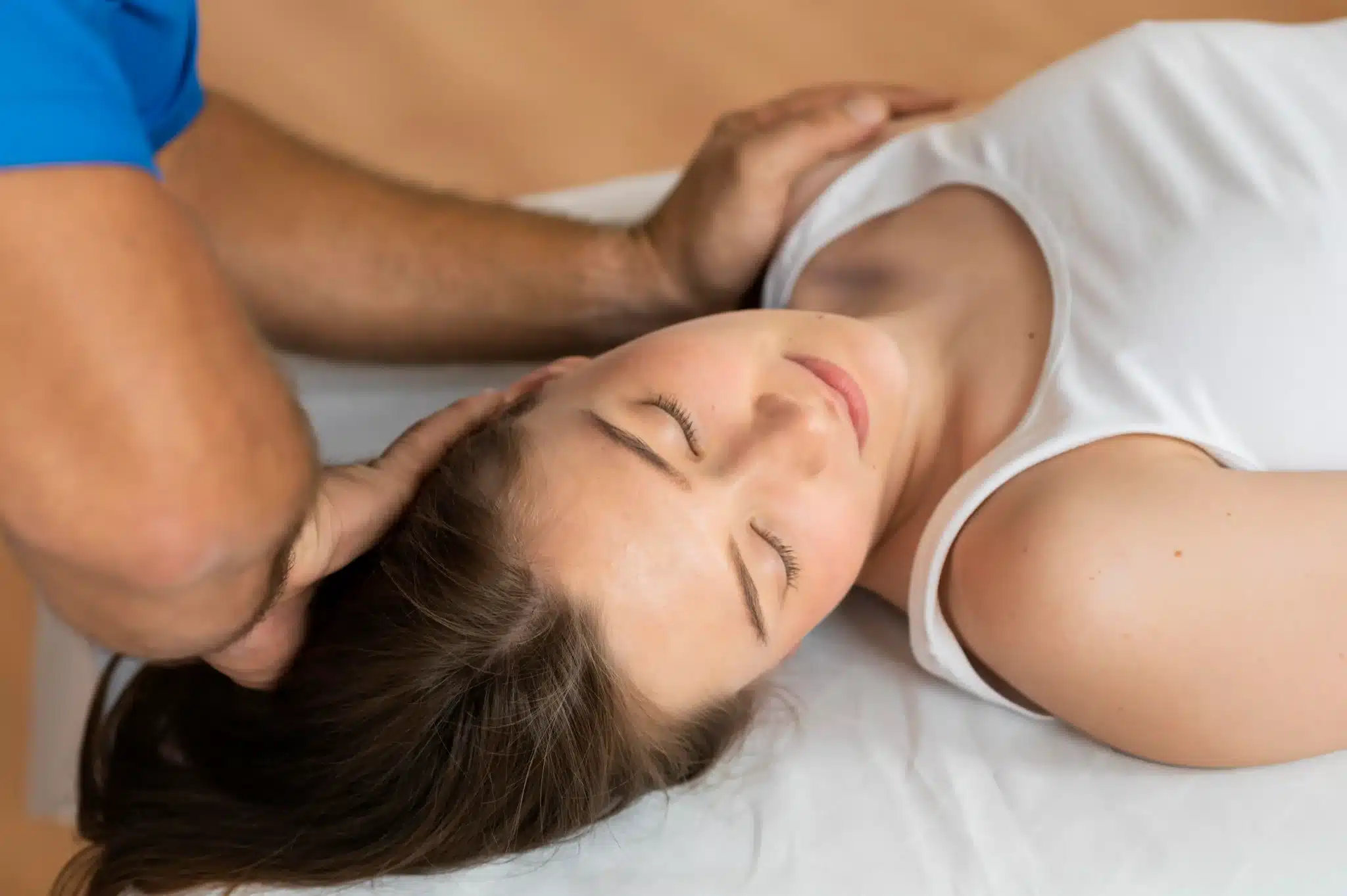More than 10 million acupuncture treatments are administered annually in the United States - and the number continues to grow! Its rise in popularity has made it one of the most utilized forms of integrative-medicine in the country. The advantages of acupuncture extend from acute pain relief to a safe and effective alternative to opioid medications.
As more scientific studies are proving the efficacy of acupuncture treatments, it’s no doubt that this holistic therapy will continue to expand and become an even more accepted medical method for pain management.
What is Acupuncture?

A key feature of traditional Chinese medicine, acupuncture treatment involves the insertion of very thin needles through a patient’s skin at strategic points along the body, in various depths. Due to their small size, the needles do not bring any discomfort but can provide relief by interrupting pain signals throughout the body.
While acupuncture has been traditionally used to treat discomfort from a wide variety of diseases and conditions, it is increasingly used as a remedy for stress management and overall wellness.
Common Types of Acupuncture
There are a wide variety of acupuncture treatments available to suit different needs. Just as the field of acupuncture has grown in popularity so have the types of acupuncture available.
Body Acupuncture
This is the most common type of acupuncture performed by acupuncturists. Body acupuncture involves placing fine needles in pain points throughout the body.
Auricular Acupuncture
Auricular acupuncture focuses on the ear exclusively. By placing fine needles in only the ear of the patient, this type of acupuncture seeks to relieve pain all across the body.
Scalp Acupuncture
Just as auricular acupuncture focuses on the ear, scalp acupuncture exclusively places thin needles in trigger points on the head. Scalp acupuncture has been known to help patients with spinal and motor-impairment issues.
Electro-Acupuncture
A form of body acupuncture, electro-acupuncture includes the use of an electro-acupuncture machine connected to the needles so the needles are stimulated with a mild electric current. This acupuncture treatment is not recommended for all patients.
Non-Insertion Acupuncture
This type of acupuncture uses blunt needles made of platinum or silver. Instead of inserting these needles into the body, the blunt needles alleviate pain symptoms by touching the trigger points. People seeking relief with headaches, migraines, and insomnia frequently use this kind of acupuncture.
Cupping Acupuncture
Cupping features placing suction cups along the patient’s skin. The cupping stimulates blood flow to the area, helping to provide relief for everything from muscle inflammation to arthritis.
How Do Acupuncture Treatments Work?

Acupuncture treatments are believed to have a neurological effect on the body. By stimulating the central nervous system with its use of needles, biochemical changes occur in the muscles, spinal cord, and brain which may promote the body’s natural healing abilities - resulting in the positive effects of acupuncture.
The practice of acupuncture has its origins in traditional Chinese medicine. By inserting needles into particular energy points with the right combinations, tradition holds that energy can be restored properly.
While there are no scientific studies to prove that these energy flows exist, what is known to be true is that this method has been the trusted treatment of thousands of people to relieve their discomfort. As more medical studies are being conducted, research has shown that treatments are indeed effective for pain management, among other benefits.
What Conditions Does Acupuncture Treat?
The advantages of acupuncture as a pain management method extend over a wide variety of conditions and diseases. Studies from the National Institutes of Health (NIH) suggest acupuncture can help treat the following conditions, either by itself or in combination with other treatments:
- Chemotherapy-induced and postoperative nausea
- Post-surgical dental pain
- Migraines
- Menstrual cramps
- Tennis elbow
- Fibromyalgia
- Myofascial pain
- Osteoarthritis
- Low back pain
- Carpal tunnel syndrome
- Asthma
The WHO also credits acupuncture with potentially helping the following conditions, although more evidence is needed:
- Fibromyalgia
- Neuralgia
- Postoperative convalescence
- Substance addiction
- Spine & neck pain
- Vascular dementia
- Pertussis
- Tourette syndrome
Acupuncture may also help with stroke rehabilitation and allergies, as well as high and low blood pressure, morning sickness, and inducing labor.
Benefits of Acupuncture Treatments
The benefits of acupuncture are numerous and increasingly being backed up by medical studies. Some of the many advantages of acupuncture include:
Pain Relief
Although acupuncture treatments have been used for hundreds of years for pain relief, studies are just being conducted to prove its effectiveness. According to the National Institute of Health (NIH), studies have found that acupuncture can alleviate pain from chronic conditions, such as pain in the lower back, neck, and knees.
Besides being effective, acupuncture treatments are minimally invasive. When performed correctly, it is a very safe method with very few side effects.
Opioid Drug Alternative
Acupuncture has been increasingly used as a safe alternative to opioid drugs. In place of potentially addictive prescriptions, acupuncture treatments can give relief from acute to chronic pain with minimal burden on the patient. In fact, the American College of Physicians recommended acupuncture as an effective non-drug therapy to limit prescribing opioid drugs as pain management options.
Acupuncture treatments are being extended to areas of pain management that were once dominated by traditional pain medications. A Cochrane study of five randomized trials and 285 patients found that acupuncture offered cancer patients pain relief as an alternative to opioid drugs. As more of the medical field attempts to find opioid alternatives, acupuncture is looking like a promising option.
Are Acupuncture Treatments Covered by Insurance?
Insurance acceptance for integrative medicine, like acupuncture, has made long strides in recent years. Where it was once impossible to be covered for holistic medicine like acupuncture and massage therapy, it is now common for many health insurance plans to cover them, at least to an extent.
However, not all insurance plans will cover acupuncture treatments and, if they do, it’s important to read the fine print. Often, insurance plans vary in what treatments they cover and when. Additionally, the billing process for integrative medicine treatments, such as acupuncture, is complicated. After completing the complex credentialing process, acupuncture practices must accurately bill for services.
Further, Medicare has special requirements for acupuncture treatments as well; while the Centers for Medicare and Medicaid Services (CMS) announced the decision to cover acupuncture for chronic back pain for the first time, it came with some caveats. To be qualified for Medicare-coverage, the acupuncture treatments have to meet specific conditions, including only covering acupuncture for chronic lower back pain and only those treatments administered by select people - not just a licensed acupuncturist.
How Medical Billing for Acupuncture Works

Acupuncture and massage services are always billed in 15-minute increments; for any additional units of time, you will use a separate code. Your acupuncture CPT codes will also vary on the type of services delivered. For instance, your codes will reflect whether or not you administer electronic stimulation in your acupuncture treatments.
Office visits, otherwise known as evaluation and management services, may be billed by acupuncture physicians on the initial patient evaluation and periodic follow-up evaluations, typically every 30 days or every sixth visit. Remember, however, that it is incorrect to bill these codes for established patients returning for visits. Acupuncture CPT codes 97810, 97813, 97811, and 97814 all include evaluation and management done as part of the overall daily treatment, so it would be inaccurate to bill for office visits.
The acupuncture billing process can be delayed with inaccurate coding or billing mistakes. To ensure your holistic practice receives the insurance reimbursements it needs, a streamlined and accurate acupuncture billing process is a necessity. By entrusting your billing needs to the experts, your holistic practice can worry less about the accuracy and efficiency of your insurance billing and more on delivering the right care to your patients! Holistic Billing has the expertise to streamline your documentation, billing, and coding processes so your practice can enhance your revenue cycle management and focus on doing what you love. To learn more about Holistic Billing can transform your holistic practice, contact us today!





